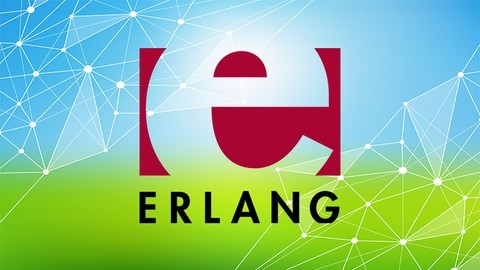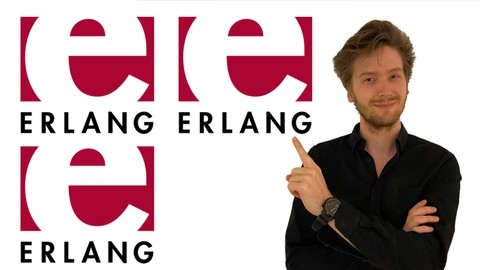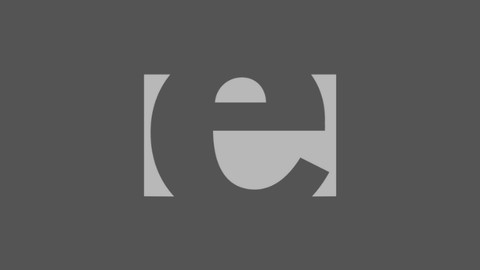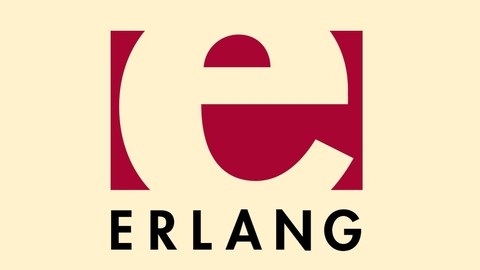Erlang is a powerful functional programming language designed for building highly scalable and fault-tolerant systems.
It excels in handling concurrency and distributed computing, making it a popular choice for developing real-time applications, telecommunication systems, and web servers.
Learning Erlang opens doors to exciting career opportunities in software development, especially in industries that require reliable and scalable solutions.
Finding the right Erlang course on Udemy can be challenging.
With so many options available, it can be difficult to identify a course that’s truly comprehensive, engaging, and taught by experts.
You’re looking for a program that not only teaches you the core concepts of Erlang but also provides practical exercises and real-world examples to solidify your understanding.
We’ve carefully reviewed numerous Udemy courses and recommend Erlang: The Complete Beginner’s Guide as the best overall course for learning Erlang.
This course stands out for its comprehensive curriculum, covering everything from the basics of Erlang to advanced concepts like concurrency, distributed programming, and the OTP (Open Telecom Platform).
The instructor, a seasoned Erlang developer, provides clear explanations, hands-on exercises, and real-world projects, making learning Erlang both enjoyable and effective.
While Erlang: The Complete Beginner’s Guide is our top pick, there are many other excellent Erlang courses available on Udemy.
Keep reading to explore our recommendations for different learning styles and goals, from beginner-friendly introductions to advanced courses focused on specific Erlang libraries and applications.
Erlang: The Complete Beginner’s Guide
The course starts by introducing Erlang and setting up the development environment, ensuring you have Erlang and the IntelliJ IDE installed on your Mac or PC.
You’ll also learn how to access the course code.
From there, you’ll dive into the basics with a “Hello World” program and an explanation of its code.
The course covers the fundamentals of the Erlang language, including functions, recursive functions, operators, atoms, data types like tuples, lists, and maps, as well as control structures like if-else statements, case statements, and loops.
To solidify your understanding, you’ll work on a car dealership challenge, with the solution provided.
The course delves deeper into functions, pattern matching, guards, and built-in functions.
You’ll also explore higher-order functions, which are powerful tools in functional programming.
One of Erlang’s strengths is concurrent processing, and this course covers processes, message passing, registered process names, and distributed programming.
You’ll learn how to run the code you’ve written on both Mac and Windows PC.
The course engages you on social media and provides further resources for continued learning after completion.
Erlang Masterclass: The Fundamentals
This course starts by guiding you through setting up the development environment on different operating systems like Mac, PC, and Linux.
This ensures you have a smooth start, regardless of your preferred platform.
Once the setup is complete, you’ll dive into the core concepts of Erlang.
You’ll explore the Erlang shell, which serves as an interactive playground for experimenting with the language.
Brace yourself for the slightly awkward syntax of Erlang, but don’t worry, the course will help you navigate it with ease.
You’ll learn about different data types in Erlang, including numbers and operators.
As you progress, you’ll understand how to work with variables and atoms, which are fundamental building blocks of the language.
The course then delves into sequential Erlang, where you’ll learn about recursion, a powerful technique for solving problems.
You’ll discover the difference between tail recursion and body recursion, and understand the importance of letting your code crash gracefully.
Embracing the functional programming paradigm is a key aspect of Erlang, and this course will introduce you to the world of functional hipsters.
You’ll explore higher-order functions like map, filter, and fold, which are essential tools for working with data in a functional way.
List comprehensions and adding layers of abstraction will also be covered, helping you write more concise and expressive code.
As a bonus, the course touches on advanced topics like records, macros, and maps.
These concepts will give you a glimpse into more advanced Erlang programming techniques.
Throughout the course, you’ll have plenty of exercises to reinforce your understanding and solidify your skills.
The course also addresses the importance of side effects and how to manage them in a functional programming context.
Whether you’re setting up your environment on a Mac, PC, or Linux, this course has you covered.
The Complete Erlang Course: From Zero to Expert!
The course starts by introducing Erlang, a functional programming language designed for building massively scalable and highly available concurrent systems.
You’ll learn how to install Erlang on different operating systems like Linux, Windows, and MacOS.
Next, you’ll dive into the fundamentals of Erlang, covering numbers, immutable variables, atoms, tuples, and lists.
The course also covers list comprehensions, which provide a concise way to transform and filter lists.
You’ll learn about modules, the building blocks of Erlang programs, and how to create and use them.
Functions are a core concept in Erlang, and you’ll learn about pattern matching, conditional statements, and recursion.
The course includes several solved problems related to functions, lists, and higher-order functions, which are functions that can take other functions as arguments or return functions as results.
The course then moves on to binary trees, a fundamental data structure in computer science.
You’ll learn how to implement binary trees in Erlang and solve problems related to tree operations like size, height, traversal, and isomorphism.
Graphs are another important topic covered in the course.
You’ll learn about graph representations, graph algorithms like depth-first search (DFS), and how to implement and visualize graphs in Erlang.
The course also covers concurrent programming, a key strength of Erlang.
You’ll learn about the client-server architecture and how to build concurrent systems using Erlang’s process model.
Throughout the course, you’ll work on practical problems that reinforce the concepts you’ve learned.
Erlang Masterclass: Concurrency and the OTP
This course is an in-depth exploration of concurrency and the OTP (Open Telecom Platform) in Erlang.
You’ll start by learning the fundamentals of concurrency, including the differences between concurrency and parallelism, and how processes and threads work in Erlang.
Through hands-on exercises, you’ll dive into the concept of a mailbox and learn how to spawn processes, create clients and servers, and even estimate pi using random numbers on a multicore CPU.
This practical approach will help you understand the power of concurrency in Erlang.
Next, the course introduces you to the OTP, a set of libraries and design principles for building robust, fault-tolerant applications.
You’ll learn about callbacks, the gen_server behavior, and how to structure an OTP application using Rebar3, the official build tool for Erlang.
But the real magic happens when you explore supervision trees and linking processes together.
You’ll learn how to handle exit signals and create child specifications with different supervisor flags.
This knowledge will be put to the test in an exercise where you’ll build a music server that can handle one million guests and one million processes simultaneously.
Throughout the course, you’ll work on practical exercises that reinforce the concepts you’ve learned.
From building a simple client/server music player to estimating pi using random numbers, these exercises will give you hands-on experience with concurrency and the OTP in Erlang.
Learn Erlang Programming - Higher Order Functions
You will start by learning the principles of Erlang from scratch, including the basics of higher-order functions and anonymous functions.
The course then dives into solving practical problems using higher-order functions.
You will tackle challenges like the equality problem, finding the product of elements, determining even results, generating infinite powers of two, calculating scalar products, flattening lists, finding lengths, reversing lists, and counting occurrences.
After mastering higher-order functions, you will explore the world of concurrent programming in Erlang.
The course introduces you to concurrency concepts and teaches you how to create a client-server architecture using processes.
You will learn about selective message reception and how to implement message reception with a timeout.
Throughout the course, you will gain hands-on experience with Erlang’s functional programming paradigm and its powerful concurrency model.
Introduction to Erlang Programming - Solved Problems
This course provides a hands-on approach to learning Erlang programming through solved problems.
You will start with functions, tackling challenges like finding square roots, identifying special prime numbers, solving stamp problems, calculating related sums, and evaluating polynomials.
Next, you’ll dive into working with lists, learning how to find the last element and the penultimate object.
The course builds up your skills step-by-step through these practical exercises.
To continue your learning journey, you can enroll in Part 3 of the course using the provided coupon code.
This structured curriculum allows you to progressively enhance your Erlang programming abilities by applying concepts to real-world problems.
Master Erlang Programming in a Day
You will start with the basics, learning about data types, variables, operators, and the fundamental syntax.
This lays the groundwork for understanding Erlang’s core concepts.
From there, you will dive into control flow structures like loops and decision-making statements such as if statements and case expressions.
These are essential for writing complex programs.
The course also covers various data structures in Erlang, including lists, maps, atoms, tuples, and binaries.
You will learn how to manipulate and work with these data structures using their respective methods and functions.
One of the key aspects of the course is its focus on functions.
You will learn how to define and use functions in Erlang, as well as explore concepts like pattern matching, guards, and recursion.
These are powerful features that make Erlang a unique and powerful language.
The course also covers more advanced topics like modules, records, macros, and header files.
These are important for organizing and structuring larger Erlang programs.
Additionally, you will learn about built-in functions and how to work with processes, which are crucial for concurrent and distributed programming in Erlang.
Throughout the course, you will have hands-on exercises and practical examples to reinforce your understanding of the concepts.
This includes working with arithmetic and logical operators, file operations, string manipulation, and more.
Erlang Programming for Beginners
This course is an excellent choice for learning Erlang programming from the ground up.
You’ll start with an introduction to Erlang, its features, and how to install it on your system.
This lays the foundation for understanding the language’s syntax, creating functions, and working with modules.
As you progress, you’ll dive into core Erlang concepts like lists, which are central to the language.
You’ll learn how to work with lists, use recursion, and leverage powerful features like list comprehensions and pattern matching.
These concepts are essential for writing idiomatic Erlang code.
The course also covers important topics like conditional flow, looping, and working with process IDs, which are crucial for building concurrent and fault-tolerant systems – a key strength of Erlang.
You’ll gain hands-on experience with exception handling, learning how to handle and manage exceptions using try/catch blocks and exception classes.
This is a critical skill for writing robust Erlang applications.
Additionally, you’ll explore records, which provide a way to store and manipulate structured data in Erlang.
You’ll learn how to create, expand, and work with records, a valuable tool in your Erlang toolkit.
Throughout the course, you’ll have opportunities to practice what you’ve learned by creating and compiling Erlang programs.
The course also includes bonus material to further enhance your understanding.
Master Erlang Programming in Just 4 Hours
The course starts with an introduction to Erlang.
You’ll learn how to install the OTP (Open Telecom Platform) version of Erlang and get familiar with its basic syntax, data types like numbers, atoms, and tuples, as well as variables and operators.
Once you have the fundamentals down, you’ll dive into control structures like loops, if statements, case statements, and pattern matching with guards.
These are essential for writing robust Erlang programs that can handle different conditions and inputs.
A significant portion of the course is dedicated to functions, which are at the heart of functional programming.
You’ll learn how to define and use functions, including recursion, a powerful technique for solving problems by breaking them down into smaller instances of themselves.
The syllabus covers several important data structures in Erlang, such as lists, strings, maps, and binaries.
You’ll learn how to manipulate and work with these data structures using various built-in functions and methods.
Moving on, you’ll explore modules, which are used to organize and encapsulate related functions and data.
You’ll also learn about records, a way to define and work with structured data, and macros, which can help you write more concise and readable code.
It also covers file input/output operations, allowing you to read from and write to files in Erlang.
Additionally, you’ll learn about funs (short for functional objects), which are anonymous functions that can be passed as arguments to other functions or stored in variables.
Finally, you’ll dive into the world of concurrency with Erlang processes.
You’ll learn how to create and manage processes, which are lightweight and isolated units of execution that can communicate with each other using message passing.
Throughout the course, you’ll have plenty of hands-on exercises to reinforce your understanding of the concepts and gain practical experience with Erlang programming.









